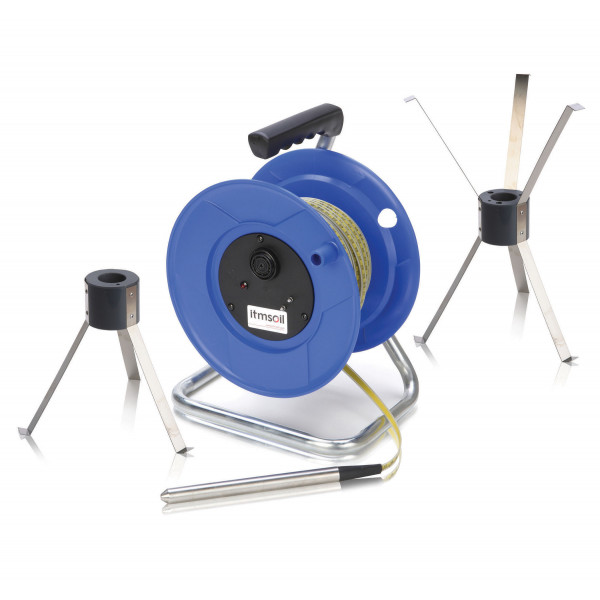



Range 30m | 50m | 100m | 150m | 200m
Resolution ±1mm
Repeatability±2mm
Operating temperature range -30 to +80° C
Graduations mm/cm/m
Indicators Audio & visual
Probe material Stainless Steel
Probe diameter 16mm
Tape type Contoured /shaped copper conductors
Tape material Steel / polyethylene coated
Reel material Steel frame / polypropylene hub
Battery life 12 hrs continuous use
Weight 1.7kg | 2.0kg | 3.0kg | 3.8kg | 4.6kg
The E2 Magnetic Extensometer is used to monitor soil or rock settlement and heave in excavations, foundations, dams, and embankments, tunnels, shafts and sheet piles. Data from the extensometer indicate the depths at which settlement has occurred as well as the total amount of settlement.
The Magnetic Extensometer System comprises a probe, a graduated tape on a reel and an access pipe along which magnetic targets are positioned. A datum or reference magnet is fixed to the bottom pipe. The probe design incorporates triple reed switches. As the probe moves along the access pipe, it detects the magnets by way of a reed-switch circuit closing. This causes a light to display and a buzzer to sound at the reel.
The bottom of the access pipe is anchored into stable ground such as bedrock. Any settlement or heave of the ground being measured will cause the magnets to move along the axis of the pipe. Various types of magnetic targets are available. There are threelegged and six-legged spider magnets, retained by leaf springs, for use in boreholes. Plate magnets are also available for placing in soil or fill when adding further sections of tubing during construction.